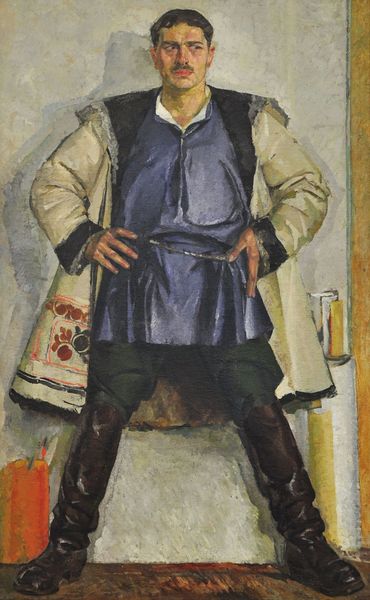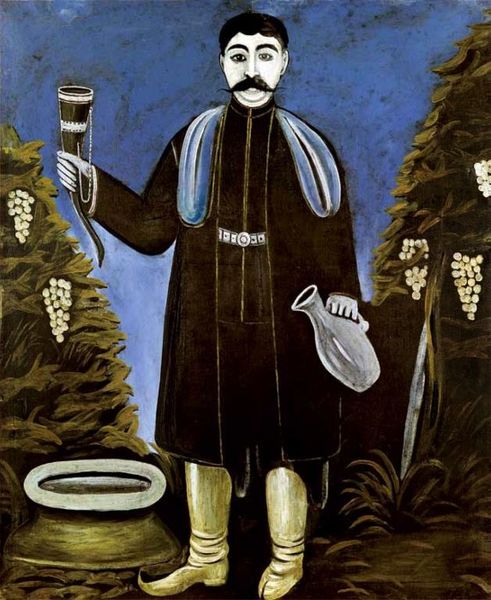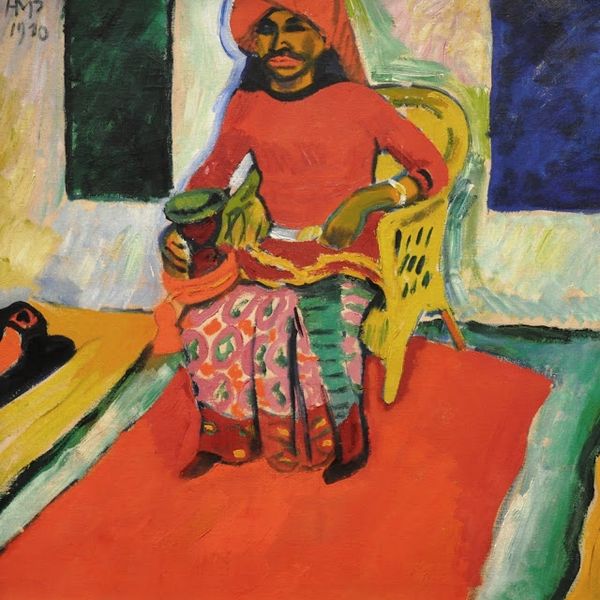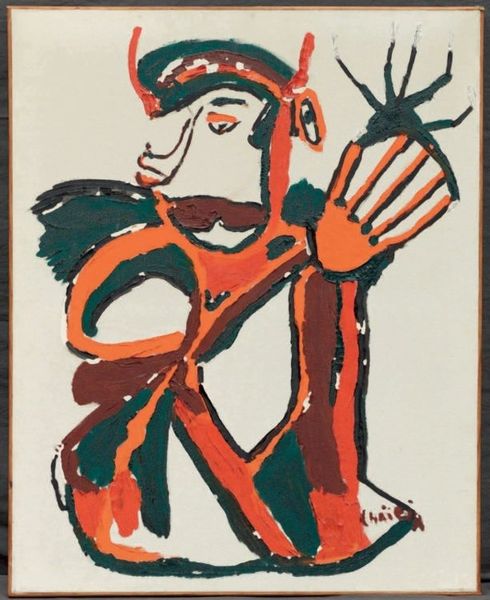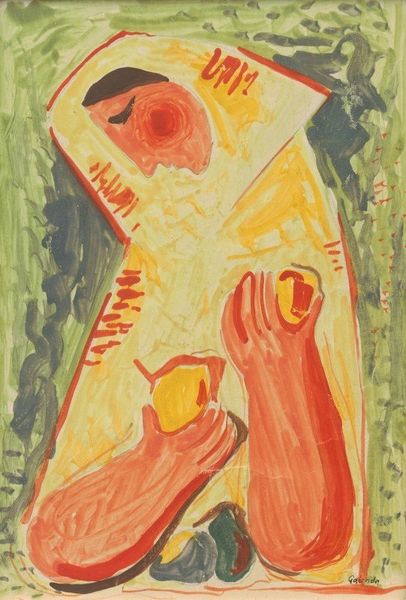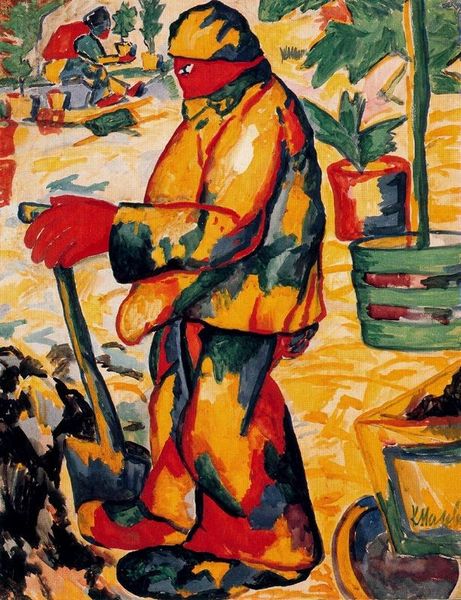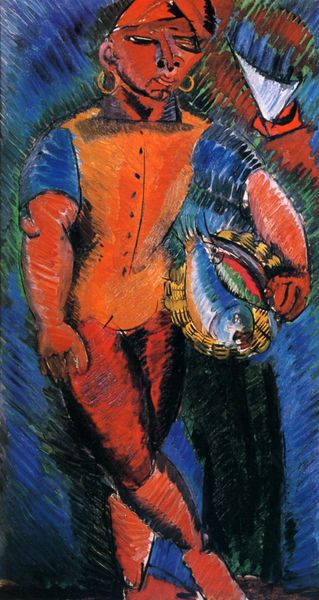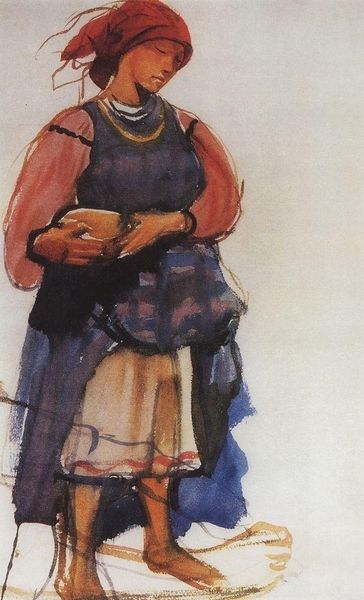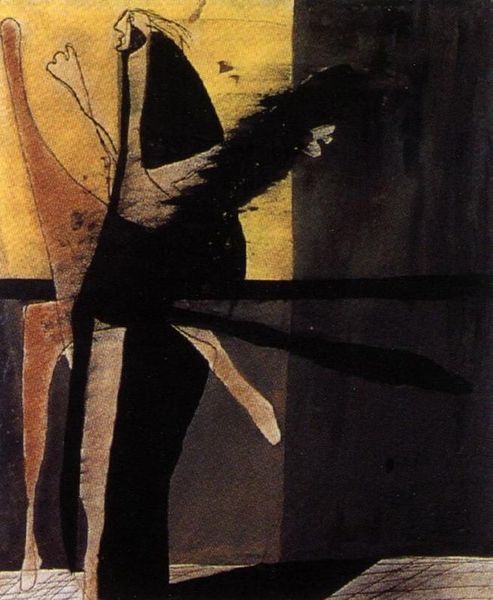
tempera, impasto
#
portrait
#
fauvism
#
tempera
#
caricature
#
impasto
#
expressionism
#
genre-painting
Copyright: Public domain US
Curator: This tempera painting, "Seller of Lemonade" by Martiros Sarian, was completed in 1910. Sarian's handling of form and color immediately situates this work within an expressionist framework, wouldn't you agree? Editor: Absolutely. It strikes me as something both serious and whimsical. The flat planes of color—that acidic yellow background, for example—create a compressed space, pushing the figure forward. There's an undeniable, albeit flattened, weightiness to him and his wares. Curator: Observe how Sarian manipulates line. Notice the curve that balances atop the figure’s shoulders, and its echo with the curves of his stance and attire. Through the orchestration of line, color, and shape, Sarian directs our attention towards the painting's intrinsic aesthetic architecture. Editor: And what about the symbolic resonance of lemonade itself? Historically, it represents refreshment, purity, and simple pleasures. It suggests a moment of respite. In that sense, this seller embodies more than just commerce; he becomes a symbol of momentary relief. Curator: The red fez and trousers also leap out. It brings a very definite sense of otherness, almost theatricality, juxtaposed with what appears to be a utilitarian trade. It points to an identity steeped in the cultural symbols of his region. Editor: Exactly. Red, in particular, often embodies vitality and even aggression. Perhaps, beyond the obvious cheerfulness of offering refreshment, we sense a subtle assertion of cultural pride and a connection to ancestral symbolism. Curator: It’s in that precise tension—between a visual grammar tending towards abstraction, yet a cultural vocabulary that remains evocative—that we might start to consider the work's brilliance. Thank you for adding that depth to the piece. Editor: The pleasure was mine. Sometimes, art speaks most eloquently when we unravel not just what it shows, but also what it implies about collective memory and lived experiences.
Comments
No comments
Be the first to comment and join the conversation on the ultimate creative platform.
